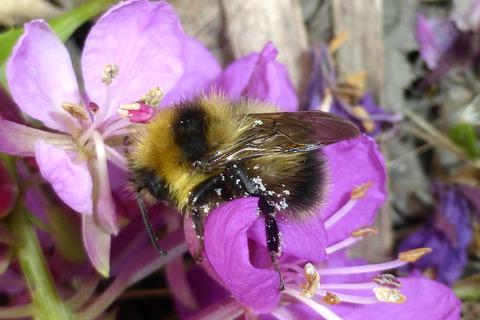当前位置:
X-MOL 学术
›
Funct. Ecol.
›
论文详情
Our official English website, www.x-mol.net, welcomes your feedback! (Note: you will need to create a separate account there.)
Mating under climate change: Impact of simulated heatwaves on the reproduction of model pollinators
Functional Ecology ( IF 5.2 ) Pub Date : 2020-12-07 , DOI: 10.1111/1365-2435.13738 Baptiste Martinet 1, 2 , Ella Zambra 1 , Kimberly Przybyla 1 , Thomas Lecocq 1, 3 , Abigaël Anselmo 1 , Denis Nonclercq 4 , Pierre Rasmont 1 , Denis Michez 1 , Elise Hennebert 5
中文翻译:

气候变化下的交配:模拟热浪对传粉媒介繁殖的影响
更新日期:2020-12-07
Functional Ecology ( IF 5.2 ) Pub Date : 2020-12-07 , DOI: 10.1111/1365-2435.13738 Baptiste Martinet 1, 2 , Ella Zambra 1 , Kimberly Przybyla 1 , Thomas Lecocq 1, 3 , Abigaël Anselmo 1 , Denis Nonclercq 4 , Pierre Rasmont 1 , Denis Michez 1 , Elise Hennebert 5
Affiliation

|
- Climate change is related to an increase in frequency and intensity of extreme events such as heatwaves. It is well established that such events may worsen the current world‐wide biodiversity decline. In many organisms, heat stress is associated with direct physiological perturbations and could lead to a decrease of fitness. In contrast to endotherms, heat stress resistance has been poorly investigated in heterotherms; especially in insects, in which the internal physiological mechanisms available to regulate body temperature are almost negligible making them sensitive to extreme temperature variations.
- Wild bees are crucial pollinators for wild plants and crops. Among them, bumblebees are experiencing a strong decline across the world. Therefore, the ongoing global decline of these insect pollinators partly due to climate change could cause major economic issues.
- Here we assess how simulated heatwaves impact fertility and attractiveness (key parameters of sustainability) of bumblebee males. We used three model species: Bombus terrestris, a widespread and warm‐adapted species, B. magnus and B. jonellus, two declining and cold‐adapted species.
- We highlight that heat shock (40°C) negatively affects sperm viability and sperm DNA integrity only in the two cold‐adapted species. Heat shock can also impact the structure of cephalic labial glands and the production of pheromones only in the declining species.
- The specific disruption in key reproductive traits we identify following simulated heatwave conditions could provide one important mechanistic explanation for why some pollinators are in decline through climate change.
中文翻译:

气候变化下的交配:模拟热浪对传粉媒介繁殖的影响
- 气候变化与诸如热浪之类的极端事件的频率和强度增加有关。众所周知,此类事件可能加剧当前全球范围内生物多样性的下降。在许多生物中,热应激与直接的生理扰动有关,并可能导致体能下降。与吸热相反,在热线中对耐热应力的研究很少。特别是在昆虫中,可用来调节体温的内部生理机制几乎可以忽略不计,从而使它们对极端温度变化敏感。
- 野蜂是野生植物和农作物的重要授粉媒介。其中,大黄蜂在全世界范围内都在急剧下降。因此,这些昆虫传粉者在全球范围内的持续下降部分是由于气候变化造成的,可能引起重大的经济问题。
- 在这里,我们评估了模拟的热浪如何影响大黄蜂雄性的繁殖力和吸引力(可持续性的关键参数)。我们使用了三种模式物种:熊熊ter,一种广泛且温暖适应的物种,B。马格努斯和乙。乔内卢斯(jonellus),两个下降且适应冷的物种。
- 我们强调指出,热休克(40°C)仅在两个适应冷的物种中对精子生存能力和精子DNA完整性产生负面影响。热休克还会影响头唇腺的结构和仅在数量减少的物种中产生信息素。
- 我们在模拟的热浪条件下确定的关键生殖性状的特定破坏,可能为解释为什么某些传粉媒介因气候变化而衰落提供一种重要的机理解释。



























 京公网安备 11010802027423号
京公网安备 11010802027423号